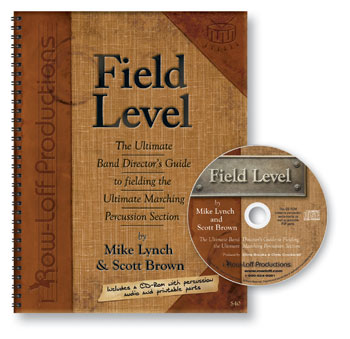The front ensemble, or pit, has evolved into a world of its own, encompassing virtually every aspect of percussion. The front ensemble is an integral part of the musical presentation providing impact with the large drums, cymbals and gongs; color through the accessory instruments; and melodic and countermelodic lines with the keyboards.
The front ensemble also provides an opportunity to develop well-rounded percussionists. Be sure that the pit is not approached as a dumping ground but as an important and enjoyable component of the band. A motivated and involved front ensemble will take any band to a higher level of performance. Cohesiveness between the front ensemble, wind instruments and battery section is one of the more difficult issues encountered when rehearsing a marching band. Several problems can be fixed by instructing the pit students to listen back to the battery ensemble if they are midfield or closer.
In some situations, they may not be able to hear the battery, [so] … the students should listen to the wind players closest to them. Occasionally one player (usually the strongest performer) will need to turn at an angle to watch the feet of the marchers on the field. Everyone else in the pit will then cue off of that student.
Try to avoid having the students watch the drum major all of the time, [which] may cause the front ensemble’s sound to reach the audience sooner than the band. [It can also] cause execution problems for keyboard players since they will have to look up to the top of a drum major podium and lose sight of the keyboard in their peripheral vision. However, the performers should watch the conductor when playing a ballad where the tempo is slow and rubato is used.
© “Field Level: The Ultimate Band Director’s Guide to Fielding the Ultimate Marching Percussion Section.” Excerpted and reprinted with permission.

